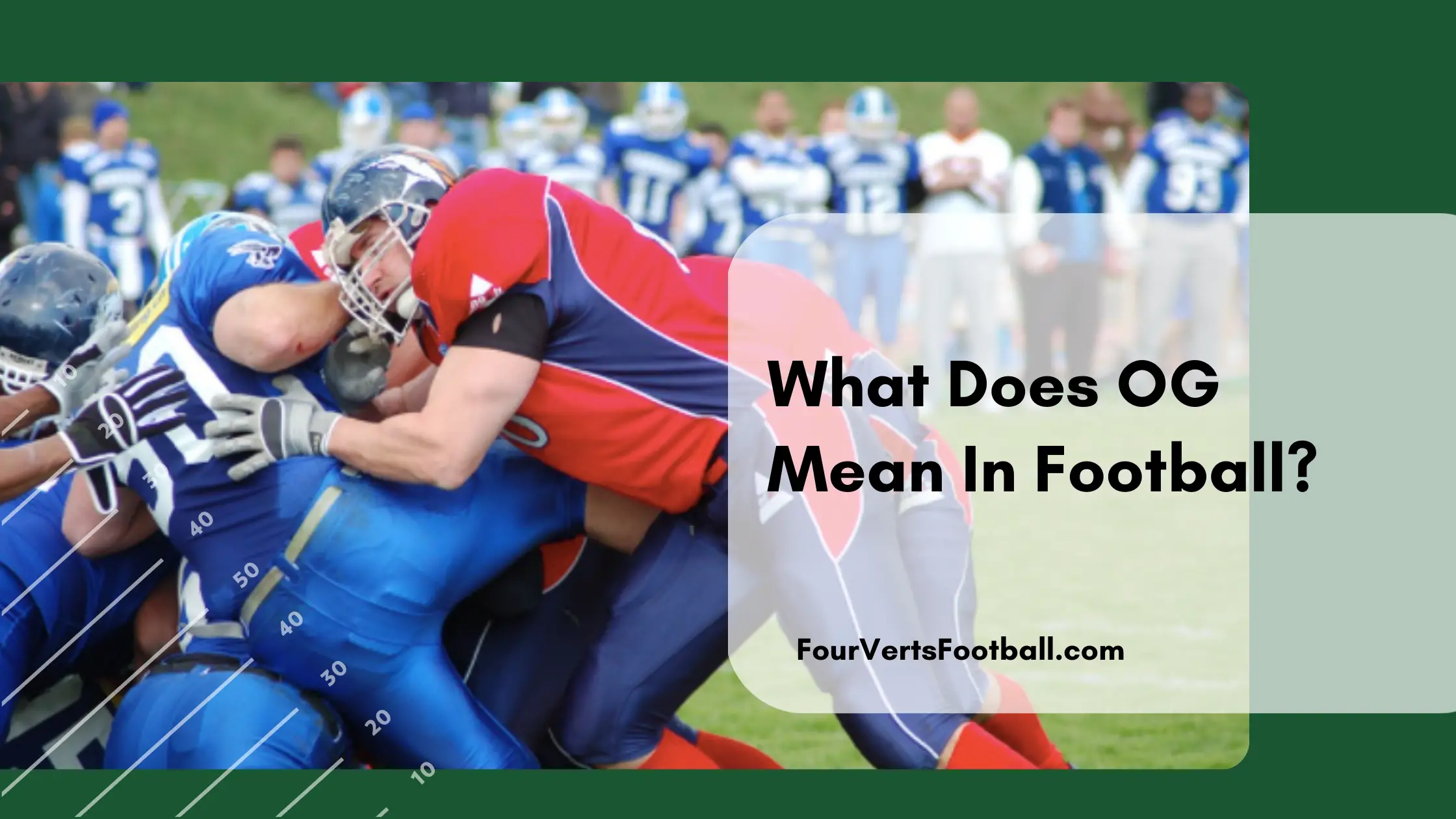The acronym OG In football refers to the position of offensive guard. Offensive guards are interior offensive linemen and have the primary purpose of stopping defenders from reaching the quarterback and running back.
There are going to be two offensive guards on the field at any given time. The two guards line up on either side of the center (C) with one being the left guard or LG and the other being the right guard or RG.
Since guards are often responsible for blocking some of the biggest players on the football field they are quite large themselves. These players will often carry a lot of body fat in order to maintain a high weight.
Despite this excess weight, these guards are incredible athletes and can move extremely quickly for their size.
Learn about some other position acronyms like OG with our guide to the KOS position in football.
What Does An OG Do In Football?
Now that you understand that OG stands for offensive guard you may be wondering what exactly these players do from play to play.
Below we will cover some of the main responsibilities that guards have in the offense.
Pass Protection Against Interior Lineman
One of the main responsibilities of offensive guards in football is to protect the quarterback. On passing plays, defensive linemen are going to attempt to get through the offensive line and reach the quarterback.
Since guards line up on the interior of the offensive line they are going to be blocking DTs also known as defensive tackles.
Defensive tackles are typically the strongest players on the football field and usually have the weight to go with it.
For this reason, an offensive guard and a center will often double-team a defensive tackle in order to keep him out of the pocket.
The center and guards positions are often referred to as IOL(interior offensive lineman) due to their position in the middle of the offensive line.
Run Blocking Against The Defensive Line
When pass blocking the offensive line will look to build a wall around the quarterback but on rushing plays, they will look to create a hole in the defensive line.
Before the play, the hole that the running back is going to run through will be communicated. It is then up to the offensive lineman to move the defensive players so that the hole exists.
On these plays, the guards are often going to be responsible for generating these holes. This usually means blocking defensive tackles or defensive ends (DE).
Guards play a huge role in run blocking and are often valued for their ability to run block over their ability to pass protect.
Pulling Down Field
One interesting factor about the guard position is that these players often leave the offensive line altogether in order to block downfield. This is typically referred to as a pulling guard.
On these plays, a tackle or center will block the defensive lineman in front of the pulling guard as he makes his way downfield.
Ultimately this will result in the guard being downfield in front of the ball carrier. Since OGs are noticeably larger than players in the secondary they are often able to layout devastating blocks.
This sort of movement away from the line is also common for OGs on screen plays. Guards that have good speed tend to excel on plays in which they have to pull downfield.
That is all for the OG position in football to learn some other positional acronyms see our guide to the SS position or the MLB position.

